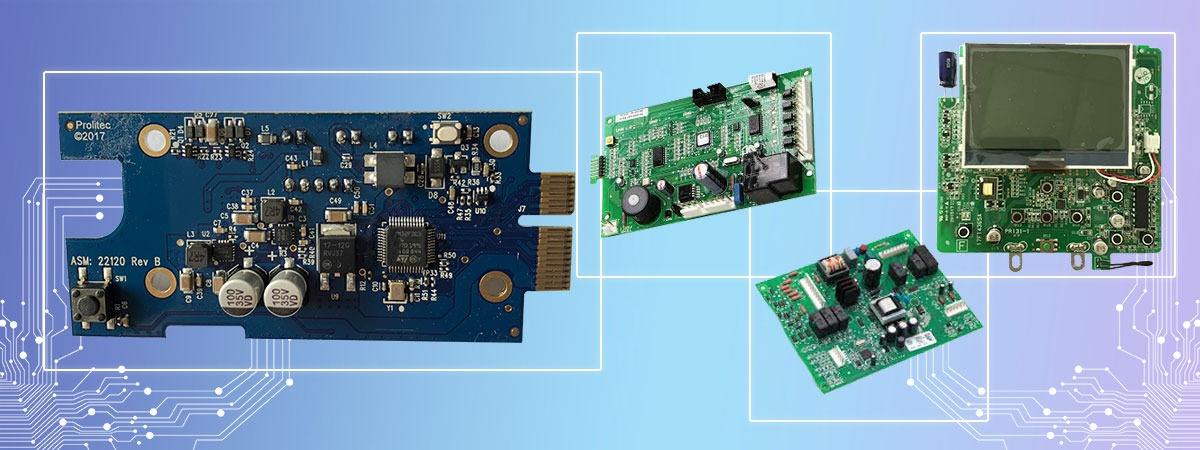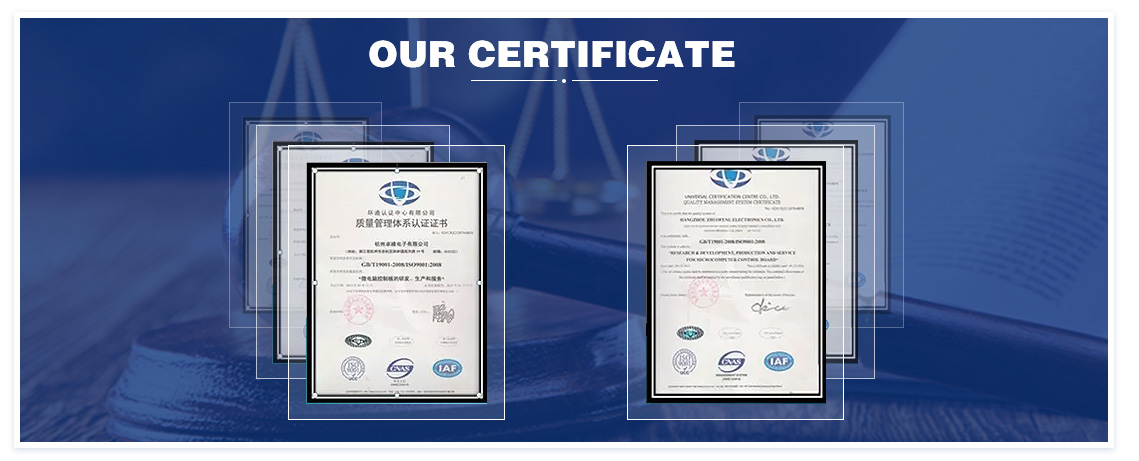How much do you know about embedded hardware development
1. Clarify the overall hardware requirements, such as CPU processing capacity, storage capacity and speed, I/O port allocation, interface requirements, level requirements, special circuit requirements, etc.
2. Develop an overall hardware plan based on demand analysis, seek key components and related technical materials, technical approaches and technical support, fully consider technical feasibility, reliability and cost control, and put forward clear requirements for development and debugging tools. You can try to get samples for key components.
3. After the overall plan is determined, do detailed hardware and software design, including drawing hardware schematic diagrams, software functional block diagrams, PCB design, and completing the development component list at the same time.
4. After the PCB board is completed, solder and debug each functional unit in the principle design, modify the schematic diagram and make a record if necessary.
5. Joint debugging of software and hardware systems. Under normal circumstances, the principle and PCB design have been adjusted after debugging, and the board needs to be re-invested.
6. Reliability test, stability test, through acceptance, the project is completed!
How much do you know about embedded hardware development
Basic skills that a hardware engineer should possess
1. Planning and creative ability from demand analysis to overall plan and detailed design;
2, skilled use of design tools, design schematics, PCB board ability;
3, skilled use of single-chip microcomputer, ARM, DSP, PLD, FPGA, etc. for software and hardware development and debugging capabilities;
4. Proficiency in using simulation tools, oscilloscopes, signal generators, logic analyzers and other hardware debugging capabilities;
5. Master the design capabilities of commonly used standard circuits, such as reset circuits, commonly used filter circuits, power amplifier circuits, matching circuits for high-speed signal transmission lines, etc.;
6. The ability to locate faults and solve problems;
7. The organization and writing skills of design documents.
What hardware engineers should pay attention to in hardware development
1. Start a hardware development project
The original impetus will come from many aspects, such as the needs of the market, the needs of the entire system architecture, the need to realize the functions of the application software department, the need to improve certain aspects of the system, and so on. Therefore, as a hardware system designer, you must Take the initiative to understand the needs of all aspects, and combine them to propose the most suitable hardware solutions. For example, the original driving force of Project A came from a high-level software team within the company. They found that the original IP forwarding capability of the processor board could not meet the requirements in practice, which would cause great inconvenience to the configuration and use of the system. They put forward a demand for new hardware.
According to this goal, two high-performance network processors are selected in the hardware solution, and then it is necessary to communicate with the software designer in depth to determine the memory size, internal structure, number and type of external interfaces and debugging interfaces, etc. And other details, such as software personnel like to completely separate the control signaling channel and the data channel, so that they must be carefully considered when determining the internal data direction.
At the beginning of the project, it is necessary to hold a lot of discussion meetings. All relevant departments should be invited to participate as much as possible. There are three benefits. First, you can fully understand everyone’s needs so as not to omit important functions in the system design. The second is to allow Each department understands the situation of this project, and prepares for time and personnel collaboration in advance. The third is from the emotional aspect. At the beginning of the design, each department participated in the project, and this project became the brainchild of everyone. , Will get everyone's care and good cooperation, which is very helpful to complete the work.
2, problems to be paid attention to in schematic design
Schematic design must be "used". Nowadays chip manufacturers can generally provide reference design schematics, so try to use these resources to fully understand the reference design and do some of your own play. When the main chip is selected, the most critical peripheral design includes power supply, clock and interconnection between chips.
The power supply is the basis to ensure the normal operation of the hardware system. The design should be analyzed in detail: the power input that the system can provide; the power output that the single board needs to generate; the current size of each power supply; the efficiency of the power circuit; the allowable fluctuation of each power supply Scope; the power-on sequence required by the entire power system, etc.
For example, the network processor in the A project needs 1.25V as the core voltage, the accuracy is between +5%~-3%, and the current needs about 12A. According to these requirements, the design adopts 5V power input and linear switching power supply. The controller and the IR MOSFET build a suitable power supply circuit. The accuracy requirements determine the ESR selection of the output capacitor, and to prevent the voltage drop caused by excessive current, a remote feedback function is added. The realization of the clock circuit should take into account the jitter and other requirements of the target circuit. GE's PHY device is used in the A project. At the beginning, a zero-delay clock distribution chip with an internal phase-locked loop was used to provide a 100MHz clock. As a result, the GE link Packet loss occurred on the computer, and then replaced with a simple clock buffer device to solve the packet loss problem. Analysis is that the internal phase-locked loop introduces jitter.
The interconnection between chips must ensure error-free transmission of data. In this regard, high-speed differential signal lines have the characteristics of high speed, good wiring, and good signal integrity. The multi-chip interconnection in the A project uses high-speed differential The signal line has no problems during debugging and testing.
3. Problems to be paid attention to in PCB design
The purpose of PCB design must be clear. For important signal lines, the length of the wiring and the processing of the ground loop must be very strict. For low-speed and unimportant signal lines, it can be placed on a slightly lower wiring priority. The important parts include: the division of the power supply; the length requirements of the memory clock line, control line and data line; high-speed differential line wiring and so on.
In project A, a memory chip is used to realize a 1G DDR memory. The wiring for this part is very critical. It is necessary to consider the topological distribution of the control line and the address line, and the control of the length difference between the data line and the clock line. In the process, according to the chip's data manual and actual operating frequency, specific wiring rules can be drawn. For example, the length of the data lines in the same group cannot exceed how many mils, and the difference in length between each channel cannot exceed how many mil and so on. When these requirements are determined, PCB designers can be clearly required to implement them. If all the important wiring requirements in the design are clear, they can be converted into overall wiring constraints, and the automatic wiring tool software in CAD can be used to realize the PCB design. It is also a development trend in high-speed PCB design.
4, inspection and debugging
When you are ready to debug a board, you must first make a careful visual inspection to check whether there are any visible short circuits and pin soldering faults during the soldering process, and check whether there is a wrong component model placement. Put the wrong place, miss the assembly and other problems, and then use a multimeter to measure the resistance of each power supply to the ground to check whether there is a short circuit. This good habit can avoid damaging the board after rashly powering on. You must have a peaceful mind during the debugging process. It is very normal to encounter problems. What you need to do is to do more comparisons and analysis, and gradually eliminate possible causes. You must firmly believe that "all things can be solved" and "the problem is certain." There is a reason", so that the debugging will be successful in the end.
5. Some summary words
From a technical point of view, every design can finally be made, but the success of a project depends not only on the technical realization, but also closely related to the completion time, product quality, and team cooperation. Therefore, good teamwork, transparent and candid project communication, meticulous research and development arrangements, and abundant materials and personnel arrangements can ensure the success of a project.
A good hardware engineer is actually a project manager. He/she needs to communicate with the outside world to obtain the requirements for his own design, then summarize and analyze the specific hardware implementation. It is also necessary to contact many chip and solution suppliers to select suitable solutions. When the schematic diagram is completed, he/she should organize colleagues to conduct cooperative review and inspection, and work with CAD engineers to complete the PCB design . At the same time, prepare the BOM list, start purchasing and preparing materials, and contact the processing factory to complete the board placement. During the debugging process, he/she should organize the software engineer to work together to research and debug, cooperate with the test engineer to solve the problems found in the test, and wait until the product is launched to the site. If there is a problem, it needs to provide timely support. Therefore, to be a hardware designer, you must develop good communication skills, the ability to adjust to pressure, the coordination and decision-making ability to handle multiple tasks at the same time, and a good peace of mind.
There is also carefulness and seriousness, because a small negligence in the hardware design will often cause very large economic losses. For example, when the PCB design is completed and the manufacturing file is completed, the wrong operation of a board has caused the power layer and the ground layer to be connected. At the same time, after the PCB board was manufactured, it was directly mounted on the production line without inspection. The short circuit problem was discovered during the test, but the components have been soldered to the board, resulting in hundreds of thousands of losses. Therefore, careful and serious inspection, responsible testing, and unremitting learning and accumulation can enable a hardware designer to make continuous progress, and then make a small achievement in the operation.


